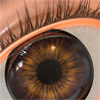- Sun May 22, 2005 11:15 am
#27115
1. If a ray hits the front of a surface then the deflection is calculated by the ND of this present as well as the previous front surface (if no previous exists, then use air)
2. If a ray hits the back of a surface then the deflection is calculated by the ND of the previous two front surfaces (the present ND is ignored).
Here is a rule of thumbedit: You mean when the ray enters from the other side, Maxwell still knows it entered the surface, but the normal angle is negative?
1. If a ray hits the front of a surface then the deflection is calculated by the ND of this present as well as the previous front surface (if no previous exists, then use air)
2. If a ray hits the back of a surface then the deflection is calculated by the ND of the previous two front surfaces (the present ND is ignored).
"Only the happy can escape the labyrinth, but only those who escape are happy"







